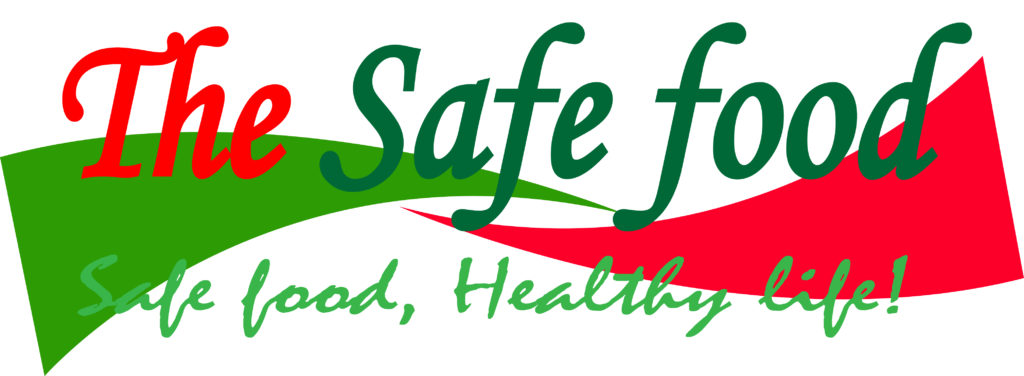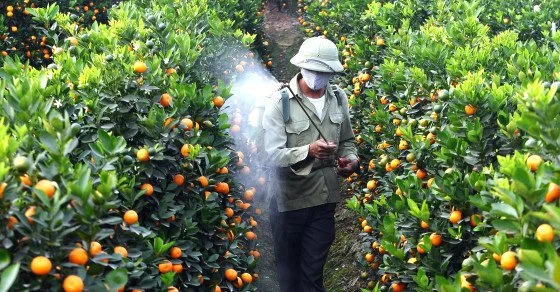Toxic contaminants can pose a risk in fresh fruit juices if proper precautions are not taken during production, processing, or storage. Toxic contaminants in fresh fruit juices may include microbial pathogens and their toxins, pesticide residues, heavy metals, mycotoxins, and other chemical contaminants. The presence of these substances can compromise the safety and quality of fresh fruit juices and may have adverse health effects if consumed in excessive amounts.
Contamination can occur at various stages of the supply chain, starting from agricultural practices, such as pesticide use, irrigation water quality, and soil contamination. Processing and storage conditions, including inadequate sanitation practices, can also contribute to contamination.
Food safety knowledge is for all!

Every consumer deserves to have high quality and safe food. …Read more!

Toxic contaminants in fresh fruit juices
Patulin
The main sources of patulin are different Penicillium, Aspergillus, and Byssochlamys species, It has been reported to be carcinogenic, and mutagenic. Important microorganisms that produce patulin include Penicillium expansum, Byssochlamys fulva, and Byssochlamys nivea. Patulin has been discovered in a wide variety of foods, especially in fruits and drinks.
Fruits’ increased levels of sugar and moisture promote the production of patulin. It is primarily found in apple-derived goods like apple juices because it is highly soluble in water and extremely stable in aqueous acidic environments. Pasteurized fruit juices may potentially include Patulin, because this mycotoxin is heat-resistant.

Aflatoxins
Aspergillus species are the primary producers of aflatoxins. The majority of the time, aflatoxin contamination occurs after harvest and during storage. Aflatoxin concentration in food increases quickly when improper handling occurs during shipping and storage, including exposure to environments like high humidity and temperatures. Aflatoxicosis is the name for the illness brought on by eating contaminated food. Dried fruits can be contaminated with aflatoxins.
Ochratoxin A
Ochratoxins are a class of mycotoxins that are mostly produced by the species Aspergillus and Penicillium. Ochratoxin is a key nephrotoxic mycotoxin with effects such as teratogenicity, cancer, immunotoxicity, genotoxicity, hepatotoxicity, and perhaps neurotoxicity. The prevalence of ochratoxins in fruit juices might rise as a result of poor agricultural, harvesting, and storage methods, as well as physical and physiological damage.

Alternaria Toxins
The main Alternaria mycotoxins are Tenuazonic acid, Alternariol, and alternariol monomethyl ether. Alternaria spp., mainly Alternaria tenuissima, Alternaria arborescens, and Alternaria alternata produce Alternariols and are found in a wide range of foods including prune nectar, carrot juice, berries, apple juice concentrate, raspberry juice, grape juice, cranberry juice, beer, and red wine. Alternaria mycotoxins are toxic, carcinogenic, and mutagenic and are responsible for DNA helix deformation.
Pesticide residues
Fruits may potentially contain residues of pesticides that are used to control pests while fruits are produced in the farm. Many factors may contribute to high levels of these pesticides on food key among them, failure to observe withdrawal periods. The lack of control in application and management in Kenya is the reason why these products potentially have pesticide residues.

Heavy metals
Through their root systems, plants absorb heavy metals from contaminated soil and airborne deposits on the sections of the plants that are exposed to the air in polluted areas. Additionally, fruit and vegetables may become contaminated with heavy metals as a result of being irrigated with cotaminated water. However, eating fruit juices made from fruits contaminated with heavy metals may be harmful to one’s health.
Reducing the levels of toxic contaminants in fresh fruit juices
Reducing the levels of toxic contaminants in fresh fruit juices is crucial to ensure their safety and protect consumer health. To ensure the safety of fresh fruit juices, regulatory authorities establish maximum permissible levels for certain contaminants, and producers are responsible for adhering to these regulations. Implementing Good Manufacturing Practices (GMP), Hazard Analysis and Critical Control Points (HACCP), and proper sanitation procedures are crucial for preventing contamination.
Regular testing and monitoring of fresh fruit juices for contaminants are essential to identify potential risks and maintain product safety. Additionally, consumer awareness and education regarding safe handling, storage, and consumption practices can help minimize the risks associated with toxic contaminants in fresh fruit juices.
Here is a list of strategies and practices that can be implemented to minimize the presence of these contaminants:
- Good Agricultural Practices (GAPs): Implementing proper agricultural practices, such as integrated pest management, judicious use of pesticides, and organic farming methods, can help reduce pesticide residues in fruits. Ensuring proper irrigation water quality and soil management practices also play a vital role in minimizing contamination risks.
- Implementation of quality and safety management systems: Some widely recognized quality and safety management systems include Hazard Analysis and Critical Control Points (HACCP), ISO 22000, Good Manufacturing Practices (GMP), and Good Agricultural Practices (GAPs). These systems emphasize risk assessment, preventive measures, traceability, and continuous improvement.
- Quality Control in Processing: Adhering to strict quality control measures during fruit juice processing is essential. This includes maintaining sanitary conditions, regular cleaning and sanitization of equipment, and proper handling of fruits to prevent contamination from pathogens or chemical residues.
- Supplier Verification: Ensuring that suppliers follow strict quality and safety standards is important. Establishing strong relationships with reputable suppliers who comply with regulations and provide high-quality ingredients helps reduce the risk of contamination.
- Compliance with Regulations: Adhering to regulatory requirements regarding maximum permissible levels of contaminants is crucial. Staying updated with relevant regulations and maintaining compliance helps protect consumers and ensures the safety of fresh fruit juices.
References
Elbagermi, M. A., Edwards, H. G. M., & Alajtal, A. I. (2012). Monitoring of heavy metal content in fruits and vegetables collected from production and market sites in the Misurata area of Libya. International Scholarly Research Notices, 2012.
Trucksess, M. W., & Scott, P. M. (2008). Mycotoxins in botanicals and dried fruits: a review. Food additives and contaminants, 25(2), 181-192.
Azam, M., Ahmed, S., Islam, M., Maitra, P., & Yu, D. (2021). Critical assessment of mycotoxins in beverages and their control measures. Toxins, 13(5), 323.
Our Blog ↗
Read the latest from our blog
Ask a Question ↗
Ask a question and get answers from our community
Give Feedback ↗
We value your feedback.


